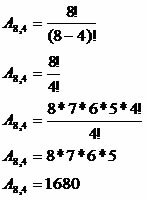How about meeting a practical method of solving equations to ease the job of finding the value of an unknown? That's the focus of our text today!
Before knowing this method, you need to be used to the sides of an equality, that is, its first and second members. Having equality as a reference, we will call all numbers that are to its right as first member and all the numbers that are to your left of second member. For example, given the equation:
6x + 1 = 2x + 9
O first member is 6x + 1, and the second member is 2x + 9. Also, in this equation, each portion that is added is called a term. The terms of the equation are: 6x, 1, 2x and 9.
An equation will be solved when, after a series of mathematical operations, the unknown x is isolated in the first member.
The practical method for solving equations will be developed in the next four steps.
1 - First Step: terms that have unknown (x) always in the first member.
In the first step, the terms that have an unknown must be rewritten in the first member of the equation, that is, on the left side of the equality. To change members, the following rules must be respected:
1 – if the term was adding, when changing members, it will subtract;
2 – if the term was subtracting, when changing members, it will add;
3 – if the term was multiplying, when changing members, it will divide;
4 – if the term was dividing, when changing members, it will multiply.
Example: In the equation below, we will perform the first step.
6x + 1 = 2x + 9
6x – 2x +1 = 9
Notice that the 2x term has moved from the right side of the equality to the left side. As he was adding, when switching sides, he had his operation changed. So it appeared on the left side as –2x.
In fact, whenever a term is changed member, the operation it performs must be reversed. The inverse of addition is subtraction, and the inverse of multiplication is division.
If a term is already in the correct member, it is not necessary to switch sides or reverse its operation.
2 - Second step: Terms that do not have unknown (x) always in the second member.
In this step, the same thing that was done in the previous step must be done, but with terms that do not have an unknown. These must be rewritten in the second member of the equation, that is, on the right side of the equality. Therefore, numbers that are not accompanied by unknowns must be rewritten on the right side of the equality and, for this, rules 1 to 4 of the first step must be observed.
Example: We will carry out the second step in the previous example.
6x + 1 = 2x + 9
6x - 2x +1 = 9
6x - 2x = 9 – 1
Note that number 1 was positive on the left side. As he had to switch sides, he reversed his operation. Therefore, it was rewritten on the right side as - 1.
3 - Third step: Carry out the resulting operations.
When all terms are in the correct members of the equation, it can be simplified, that is, all resulting operations must be performed.
Before starting this step, you can see that all numbers will be on the right side of the equality and all unknowns will be on the left side of the equality.
Example. Continuing with the previous example, we will have:
6x + 1 = 2x + 9
6x - 2x +1 = 9
6x - 2x = 9 - 1
4x = 8
4 - Fourth step: Isolate the unknown.
Usually this step is performed because, after the operations of the previous step, the results are equations like the one in the following example:
4x = 8
The result of an equation is given when the unknown x is isolated in the first member, that is, when it is alone after performing all possible mathematical operations. What you can do in this case is pass the number 4, which follows the unknown x, to the second member of the equation. However, remember the rule in the first step: the number 4 is multiplying the unknown x, when changing from member, must change to the reverse operation, that is, when moving to the right side, 4 must divide and not multiply. Watch the step by step:
4x = 8
x = 8
4
x = 2
Example: Calculate the value of x in the equation below:
25x – 19 = – 15x + 21
Following the steps above, we will have:
1st step: 25x – 19 + 15x = 21
2nd step: 25x + 15x = 21 + 19
3rd step: 40x = 40
4th step: x = 40
40
x = 1
Solution: x = 1.
By Luiz Paulo Moreira
Graduated in Mathematics



